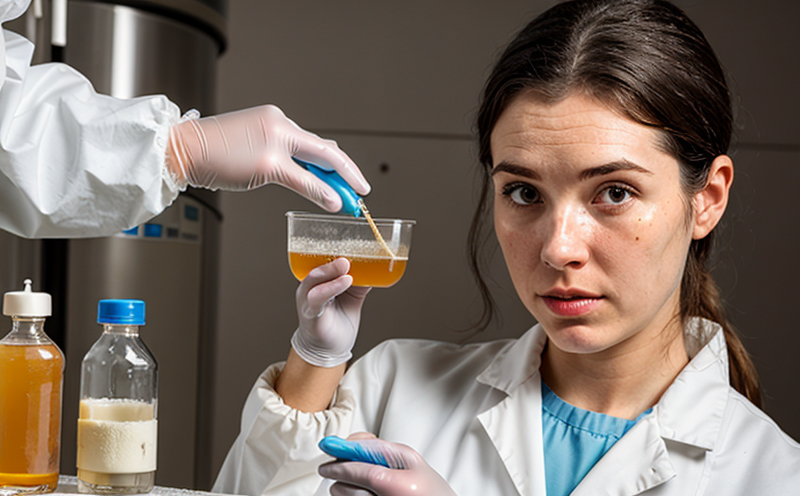OECD Fungal Ecotoxicology Testing in Soils
The OECD (Organisation for Economic Co-operation and Development) guidelines provide standardized methodologies for assessing the potential environmental impacts of chemical substances on soil ecosystems. One such test is the OECD Fungal Ecotoxicology Test, which evaluates the effects of chemicals or mixtures on fungal communities in soils. This testing method is crucial for ensuring that new products do not harm the biodiversity present in soil environments.
The fungi play a vital role in nutrient cycling and decomposition processes within ecosystems. They are essential components of soil health and contribute significantly to maintaining ecological balance. Therefore, understanding how chemicals might affect these microorganisms helps prevent unintended environmental damage during product development or application.
This test involves exposing soil samples containing various fungal species to concentrations of the substance being evaluated over a defined period under controlled conditions. After this exposure phase, the health and viability of the fungi are assessed using microscopic techniques such as scanning electron microscopy (SEM) or confocal laser scanning microscopy (CLSM). Additionally, metabolic activity assays may also be conducted to measure changes in fungal growth rates.
The results from these analyses help determine whether there has been any adverse impact on the soil's microbial community structure and function. Compliance with such tests ensures that companies can meet regulatory requirements while minimizing risks associated with introducing potentially harmful substances into natural environments.
Our laboratory adheres strictly to international standards like OECD 317, which specifies detailed procedures for conducting this type of ecotoxicological assessment on soil microorganisms. By following these protocols closely, we ensure accurate and reliable data that can be trusted by regulatory bodies worldwide.
In summary, the OECD Fungal Ecotoxicology Test plays a pivotal role in safeguarding environmental sustainability during industrial activities. It provides valuable insights into how chemicals interact with soil ecosystems at both molecular and ecological levels, thereby facilitating informed decision-making processes across various sectors including agriculture, pharmaceuticals, and chemical manufacturing.
Scope and Methodology
| Parameter | Description |
|---|---|
| Test Specimens | Soil samples collected from diverse environments relevant to the study. |
| Chemical Concentrations | Different concentrations of chemicals ranging from 0% (control) to higher levels up to 10%. |
| Exposure Duration | The duration varies depending on the chemical but typically ranges between 7 days and 28 days. |
| Microscopy Techniques | SEM, CLSM used to observe morphological changes in fungi under different conditions. |
The methodology for conducting the OECD Fungal Ecotoxicology Test involves several key steps. Firstly, appropriate soil samples need to be selected based on their relevance to the study objectives. These samples should ideally represent typical conditions found in target environments where the chemical might be released.
Following sample collection, they are divided into groups corresponding to different concentrations of the chemical under investigation. Each group receives equal treatment except for varying levels of the substance added. Exposure periods vary according to specific requirements but generally last between 7 and 28 days.
During this time, detailed observations are made regarding any observable changes in fungal morphology using advanced imaging techniques like SEM or CLSM. These tools allow researchers to visualize minute details about structural alterations within the fungi after exposure to different chemical concentrations.
To quantify these observed effects further, metabolic activity assays can be performed. Such tests assess how well the fungi continue performing their essential functions such as nutrient absorption and energy production post-exposure.
Why Choose This Test
The OECD Fungal Ecotoxicology Test offers numerous advantages over other methods when assessing the environmental impact of chemicals on soil ecosystems:
Regulatory Compliance: Adherence to internationally recognized standards ensures that your company meets all necessary legal requirements, reducing potential risk exposure.
Accurate Data: By employing rigorous protocols and state-of-the-art analytical techniques, we guarantee precise measurements of even subtle changes in fungal health and activity.
Comprehensive Insights: The comprehensive nature of this test provides detailed information about both short-term and long-term impacts on soil microbial communities.
Enhanced Reputation: Demonstrating commitment to responsible chemical use enhances your organization's reputation among stakeholders, including consumers and regulatory agencies alike.
Cost Efficiency: Although it might initially seem expensive, the long-term savings achieved through avoiding costly errors or penalties far outweigh these upfront costs.
Competitive Advantage and Market Impact
The ability to accurately assess the effects of new chemicals on soil ecosystems gives your company a significant competitive edge in several ways:
Pioneering Innovation: Being one step ahead by offering more thorough testing options positions you as an industry leader.
Better Products: Understanding the full range of effects allows for better product design and development, potentially leading to improved performance and reduced costs.
Better Customer Trust: Demonstrating a strong commitment to environmental protection builds trust with customers who value sustainability practices.
Stronger Relationships: Working closely with trusted partners ensures stronger relationships throughout the supply chain, enhancing overall business resilience.





